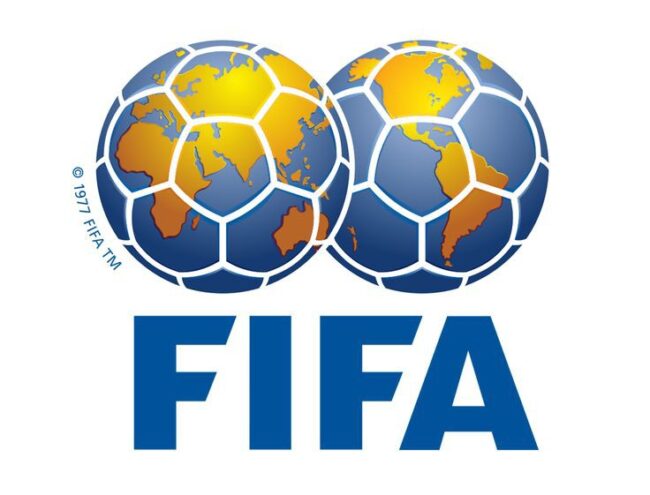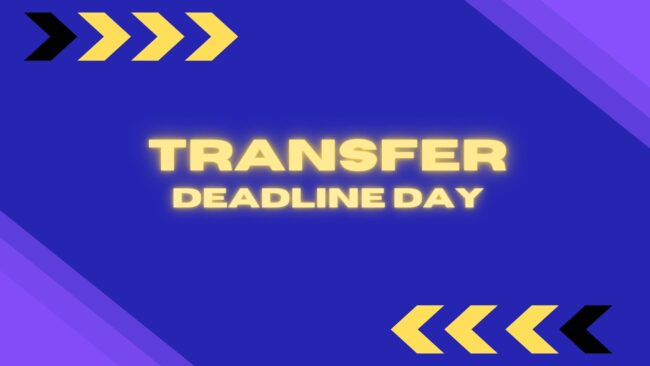With the 2022 summer transfer window edging to a close, FootballOrbit presents you with some interesting facts about football transfers.
In Association Football, a transfer refers to the movement of a player’s registration from one football club to another.
Generally, football players can only be transferred during a transfer window, and in accordance with the rules set by a governing body.
A transfer fee is an agreed financial compensation paid (after negotiations) from an interested club to the club that possesses the player’s exclusive contracted playing rights.
When a player moves from one club to another, their old contract is terminated while the player and his new club will both negotiate on new contract terms.
The amount of a transfer fee depends on the player’s current football abilities, future potential, duration of the existing contract, amount of future salary owed (within the remaining duration of the existing contract) and the willingness of clubs to agree on a deal.
Transfer window

A transfer window is the period of the year in which a football club can sign players from other teams to their own. Such a transfer is completed by registering the player into the new club through FIFA.
According to the FIFA Regulations on the Status and Transfer of Players, each national football association decides on the duration of a transfer window but it may not exceed 12 weeks. The second registration period occurs during the season and may not exceed 4 weeks.
The transfer window of a given football association governs only international transfers into that football association.
International transfers out of an association are always possible to other associations that have an open window. The transfer window of the association that the player is leaving does not have to be open.
Brief history of the transfer window
The current transfer window system was introduced in 2003 as part of a compromise agreement with the European Commission. It was about making transfers more efficient and to preserve contractual stability for both players and clubs by allowing movement at specific times during the year — the summer and winter transfer windows.
Before the adoption of the current transfer window system, football players could be transferred throughout the season up until March. It was felt that allowing such transfers could undermine the integrity of competitions.
For instance, a team challenging for the title or battling relegation might suddenly buy players from another club with nothing to play for on short-term contracts to help them.
Moreso, teams could lose their best player(s) at any point during the season.
The alternative to transfer windows in other places is to ensure football is in line with other industries, where contracts were not enforceable or liable for appropriate compensation.
The football authorities across Europe felt this would fatally undermine the footballing economy and remove the incentive for clubs to invest in developing players.
UEFA already had transfer windows for their club competitions before they were introduced in the various domestic leagues. Thus, some clubs were used to operating within windows.
The major benefit of transfer windows is that they enable clubs and managers to plan for a set period of time with the players they have at their disposal.
It also gives the opportunity for younger players to play if there are injuries or drops in form from established first-team members — whereas before, the temptation would always be to go and buy a replacement.
Each league and association set their transfer deadline but ultimately, FIFA sets the parameters and if a league/association goes against the law, they would be sanctioned.
Clubs will still have the ability to sell players to other leagues in which the transfer window is open and can also sell to leagues that have different transfer window dates — such as the Major League Soccer (MLS).
In England, although transfers between clubs in the same league can take place as soon as the last matches of the season have been played, many transfers will not be completed until the 1st of July because the contracts of many players expire on the 30th of June.
International transfers into the English leagues (including the Premier League) cannot be made until the window has opened on the 17th of May.
Outside the transfer window, a club may still sign players on an emergency basis, usually if they have no goalkeeper available. In such situation, special dispensation from the league governing body is required.
Transfer Deadline Day

The day in which a window closes is known as transfer deadline day. It is usually one of the busiest days of the window because a lot of transfers are hurriedly completed — generating much media frenzy.
Majority of transfer businesses are concluded before the deadline day.
If the last day of a transfer window is on a weekend, the deadline can be extended to the following Monday at the request of those involved — due to business reasons.
The first shift of a transfer deadline since its inception took place in the summer of 2008 when the deadline was extended by 24 hours to fall on Monday, 1st September at midnight.
The transfer deadline in England was similarly extended to 5pm on the 1st of September 2009, due to the August Bank Holiday.
The German football league also extended the January 2009 winter transfer window deadline to the 2nd of February.
Why there are different transfer window dates across Europe
The transfer window of 18 among the 53 European countries — most of them major footballing nations — close at the same time.
There are various factors for this but it mainly has to do with working practices, weekends, holidays etc.
Free agents
Free agents can be signed by a club at any time during the season. Signing a free agent is known as a “Bosman transfer”.
It was named after a former Belgian footballer, Jean-Marc Bosman, who got into a dispute with Belgian club, RFC Liège.
His contract had expired and he was looking to move to Dunkerque FC in France.
Dunkerque refused to pay the £500,000 transfer fee that Liège were asking for. Bosman was left in limbo and his wages were cut by 75% due to him not playing.
After a lengthy legal battle, Bosman won the case in 1995 when the European Court of Justice ruled that players should legally be free to join any club when their contract with their current team has expired.
Here are 10 of the best free transfers in football history.
Most expensive transfers
The most expensive transfer in football history is the €222 million transfer of Brazilian forward Neymar from Barcelona to PSG in 2017.
It is followed by the €145m transfer of Kylian Mbappe Monaco to PSG the same year.
The third most expensive transfer is the €126m of Portuguese youngster Joao Felix from Benfica to Atletico Madrid in 2019.
It is followed by Philippe Coutinho‘s €120m move from Liverpool to Barcelona in 2018 and Antoine Griezmann from Atletico Madrid to Barcelona for the same amount in 2019.
The most expensive English player is Jack Grealish, who made a €117m transfer from Aston Villa to Manchester City in 2021.
The most expensive defender is Harry Maguire who moved from Leicester City to Manchester United in 2019 in a €87.1m deal.
Kepa Arrizabalaga‘s €80m transfer from Athletico Bilbao to Chelsea in 2018 makes him the most expensive goalkeeper of all time.
Criticism of the transfer window
Some critics have called for the scrapping of the transfer window in favour of the previous system — where transfers could be made throughout the season until the closing weeks.
They claim that the transfer window breeds panic and encourages corrupt transfer activities.
In January 2015, the International Federation of Professional Footballers (FIFPro) said that the current transfer window system is “failing football and its players”. Stating that players are being released from clubs without explanation or due compensation.
Some football transfer terminologies
Authorised signatory – Any player contract and transfer agreement must be signed by an authorised signatory of the club. This means an official of a club duly authorised by a resolution of its board of directors to sign forms as required by these rules.
Buy-back clause — A transfer may also include a buy-back clause in which the selling club attaches an option to buy the player back at a predetermined amount and date.
Buyout clause — Refers to a clause in a football player’s contract that requires a willing club which intends to purchase the playing rights of the football player under contract with his current club, to pay a stipulated amount as stated within the clause to the club that still owns the contractual playing rights of the player.
The buyout clause is only valid during the stipulated duration of the clause and the current club may always choose to sell at a lower price and before the expiry of the clause.
Compensation fee – This is the sum of money agreed by two clubs for the transfer of the registration of a player and is generally made by telegraphic transfer. It is popularly called transfer fee.
Co-ownership — A system whereby a club will purchase 50% of the rights of a player’s contract and pay the wages, while also deciding which of the two clubs he will play for.
Deal sheets – Sometimes it is not easy for clubs to get everything on a deal completed and sent over to the authorities before the deadline. The deal sheet allows a club to confirm that a deal has been reached and to allow for additional time to submit the remaining documentation.
The deal sheet cannot be used until two hours before the transfer deadline and needs to arrive fully completed before the transfer window closes.
Once the sheet arrives, clubs have an additional two hours after the window closes to submit the full paperwork. But if a club is looking to complete an international transfer, they still have to comply with the FIFA TMS of deadline midnight.
Exceptional temporary transfer (aka emergency loan) – The temporary transfer of a goalkeeper in “exceptional circumstances”, subject to Board permission. It can take place outside the transfer window.
Eligibility – Where applicable, a club’s application to register a player has to be accompanied by evidence to the league body demonstrating that the player is qualified to play for the club.
The league will not confirm the player is eligible to play for the club applying to register him until it has received such evidence.
Home Grown Player (HGP) — A player who graduated from a club’s youth system, irrespective of nationality .
International Transfer Certificate – An International Transfer Certificate (ITC) is a certificate provided from one national association to another to facilitate the transfer of a player between countries.
An ITC will be required for a player aged 18 or over where that player’s immediately previous football registration was overseas.
Any player moving to a new league association must have an International Transfer Certificate issued to them from the national association he is leaving.
Loans – These are temporary transfers where a player is allowed to temporarily play for a club other than the one he is currently contracted to. Loan deals may last from a few weeks to all season-long and can also last for a few seasons.
Medical – All players transferred from one club to another will undergo medical examinations to determine their fitness before a contract is signed. When clubs are negotiating a temporary transfer, the club looking to acquire the player can request the club where he is registered to provide his medical records.
Furthermore, players have to pass the medicals by showing that they are not nursing any serious injury.
Net spend – the amount of money spent on transfers by clubs that includes spending of compensation fees received for players transferred.
Out of contract — If a player is out of contract prior to the close of the window, he is free to approach and sign for a club outside the transfer window. Such player is known as a free agent.
Pre-contract — an agreement by a player to sign for a club at a later date.
Registration — To register a player, clubs have to send the league body all the documents relating to the transfer, including but not limited to; the player’s contract, the transfer agreement, permission to work in the country (if required), international clearance if transferring from abroad (International Transfer Certificate).
Squad list – After the closure of the transfer window each club must submit a squad list to the league containing the approved number of players, including the Home Grown Players.
Third-party ownership — Third party ownership is ownership of a player’s economic rights by third-party sources, such as football agents, sports-management agencies, or other investors.
The Premier League outlawed third-party ownership of players in 2007.
Training Compensation — fee paid to cover the cost of training a player. It is mostly paid when a young player has been recruited from another club’s academy.
FIFA law states that:
Training compensation shall be paid to a player’s training club(s): (1) when a player signs his first contract as a professional and (2) each time a professional is transferred until the end of the season of his 23rd birthday.”
Transfer bans — Restrictions placed on a football club for one or more transfer windows (or for a certain number of years) to prevent the club engaging in transfer activities.
Transfer Matching System (TMS) — When there is an international transfer, the buying and selling clubs have to register it on the FIFA Transfer Matching System (TMS) in order for international clearance to be generated.
The buying club have to upload all the information to the system and the foreign club have to match all the details.


